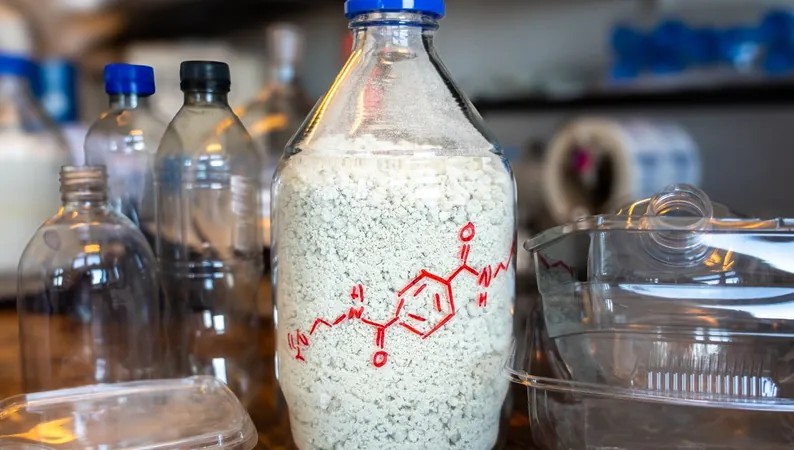
Transforming Trash: New Breakthrough Converts Plastic Waste into Carbon Capture Tool
2025-09-09
Author: John Tan
Revolutionizing Waste Management with BAETA
In an exciting advancement from the University of Copenhagen, researchers have unveiled a groundbreaking method to tackle plastic waste and combat climate change simultaneously. Led by PhD fellow Margarita Poderyte, the team introduced a new material called BAETA, derived from plastic refuse that typically ends up in landfills.
Efficient and Eco-Friendly Synthesis
The magic of BAETA lies in its synthesis process, which takes place at ambient temperatures, making it more manageable than other carbon capture techniques. This revolutionary approach means there’s no need for ultra-cold or pressurized conditions, allowing it to function efficiently from room temperature up to 150 degrees Celsius, as highlighted by co-author Jiwoong Lee, an Associate Professor in Chemistry.
A Game Changer for Industrial Emissions
With its impressive heat tolerance, BAETA can be strategically placed in high-temperature environments within industrial plants, capturing carbon directly from exhaust emissions. Once it reaches its saturation point, this innovative material undergoes a heating process to release the stored carbon, which can then be transformed into useful products like carbonated beverages, cement, and potentially much more.
A Dual Solution for Plastic Waste and Carbon Emissions
Poderyte emphasized the immense potential of BAETA, especially in its next phase: scaling production to a commercial level. As the demand for sustainable solutions increases, attracting investments to turn this concept into a viable business model is key.
Turning Ocean Waste into Opportunity
What sets BAETA apart from traditional carbon capture technologies is its ability to integrate directly into existing emissions sources rather than just harvesting carbon from the atmosphere. Moreover, the process simultaneously addresses the escalating plastic waste crisis, particularly microplastics that infiltrate ecosystems and human bodies alike.
Poderyte expressed optimism about utilizing highly decomposed PET plastics from our oceans, stating that such materials are ideal for their upcycling approach. This intertwining of environmental sustainability with technological innovation provides a compelling economic incentive to clean up our oceans.
A Collaborative Effort Towards a Cleaner Future
In conclusion, Poderyte and Lee are clear that the solutions for environmental issues require a multi-faceted approach. By turning waste into a resource that actively mitigates greenhouse gas emissions, the team is not just solving two problems; they are paving the way for a cleaner, greener future.


 Brasil (PT)
Brasil (PT)
 Canada (EN)
Canada (EN)
 Chile (ES)
Chile (ES)
 Česko (CS)
Česko (CS)
 대한민국 (KO)
대한민국 (KO)
 España (ES)
España (ES)
 France (FR)
France (FR)
 Hong Kong (EN)
Hong Kong (EN)
 Italia (IT)
Italia (IT)
 日本 (JA)
日本 (JA)
 Magyarország (HU)
Magyarország (HU)
 Norge (NO)
Norge (NO)
 Polska (PL)
Polska (PL)
 Schweiz (DE)
Schweiz (DE)
 Singapore (EN)
Singapore (EN)
 Sverige (SV)
Sverige (SV)
 Suomi (FI)
Suomi (FI)
 Türkiye (TR)
Türkiye (TR)
 الإمارات العربية المتحدة (AR)
الإمارات العربية المتحدة (AR)